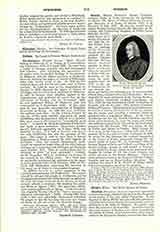

Stuart, HENRY BENEDICT MARIA CLEMENT, cardinal, Duke of York, known by the Jacobites as HENRY IX, KING OF GREAT BRITAIN, FRANCE, AND IRELAND; b. at Rome, March 11, 1725; d. at Frascati, July 13, 1807. He was the second son of James Francis Edward Stuart, the Chevalier de St. George, and Clementina, daughter of Prince James Sobieski. In 1745, when hopes of a Stuart restoration ran high, he visited France, hoping to embark with French troops to the assistance of his brother Charles Edward. Having spent several months at Dunkirk without effect, he returned to Rome with the intention of entering the ecclesiastical state. In 1747, at the age of twenty-two, he was created cardinal, and during the following year he received Holy orders, being ordained priest on September 1. He was immediately made archpriest of the Vatican Basilica, and shortly afterwards cardinal camerlengo. In November, 1759, he was consecrated titular Archbishop of Corinth, and on July 13, 1761, became Cardinal–Bishop of Frascati. Being sincerely pious and earnest, he proved a zealous administrator of his see, reforming the clergy, and founding a seminary which he endowed with a magnificent library. At the French Revolution he lost his French benefices, sacrificed many other resources to assist the pope, and finally was reduced to poverty by the seizure of his Frascati property by the French. Old and infirm, he fled to Padua and thence to Venice. King George III then came to his assistance, aiding him with a life-annuity till he was able to return to Frascati in 1800. In return for this kindness the cardinal bequeathed to the Prince of Wales, afterwards George IV, the crown jewels of James II. In September, 1803, he became Bishop of Ostia and Velletri, and Dean of the Sacred College, though he still resided at Frascati. At his death the Stuart papers in his possession were bought by George IV for the Royal Library, and others are now in the British Museum. There are three pictures of him in the National Portrait Gallery, London, and one at Blairs College, Aberdeen. The cardinal lies buried in St. Peter’s at Rome, where Canova’s monument preserves his memory.
EDWIN BURTON

